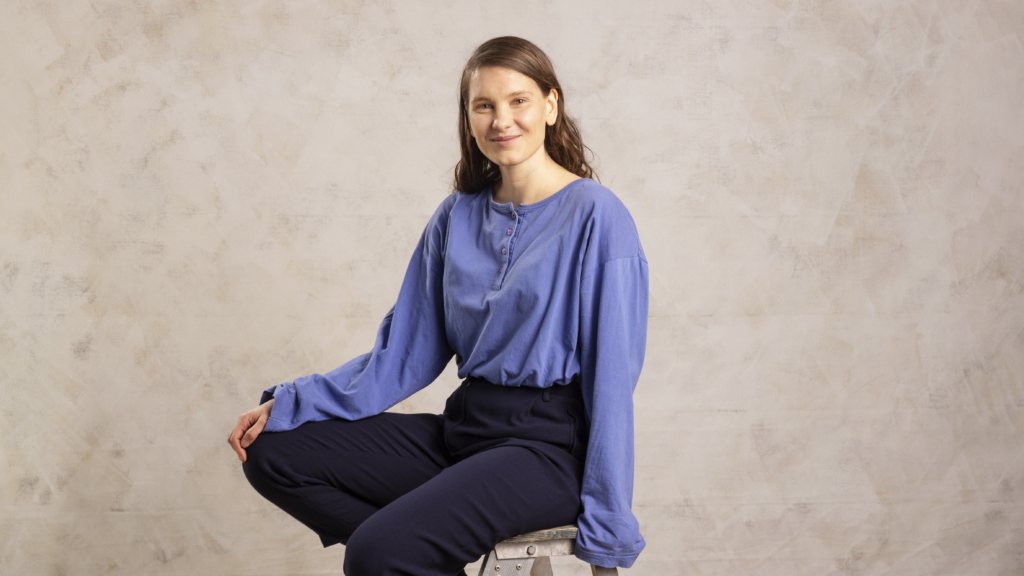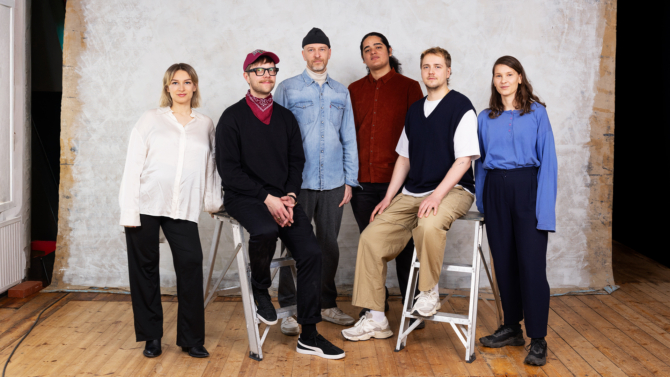Tell us about your project. What is it about and what themes or questions does it address?
My film, which currently goes by the working title Elämänlanka, is about mobile libraries and the people who use them. The film is a tribute to the library, which maintains the idea that everyone has the right to free art, information and stories.
The film deals with the longing for both connection and separation. Reading is often a solitary activity. Even so, by reading we can experience a very strong connection. The tragedy of being human is that we are stuck in one body and one mind for our entire lives. Reading can momentarily dissolve this separation: we can put ourselves in the shoes of another person in a way that is not possible in the real world. In my project, I investigate whether the paradox of reading could be presented in cinematic form. If this is the case, how?
The visual aspects of reading are often quite vague and that interests me. Black characters on white paper form images in the reader’s brain. A reader may follow a character for hundreds of pages without ever seeing their face. I think it would be interesting to attempt to translate the visuality of reading into the language of film.
My hope is that Elämänlanka could serve as a tribute to the library, because it is a wonderful service. Through my film, I want to embrace everything it represents: freedom of art, speech and religion, social equality, free education and art that is as accessible as possible. Libraries are venues for exchange that does not involve money and the books are in joint ownership. The idea of mobile libraries in particular is especially poetic and beautiful to me: the mobile libraries zooming around towns symbolise something extremely valuable, which I would like to cherish and examine in my first feature film.
What does documentary in film mean to you?
This is a vast and interesting question, which is difficult to answer concisely. In principle, documentary film does not limit the narrative means in any way. That being said, freedom of expression does not make the film fictional. Most of all, the documentary aspects lie in the film’s outlook and way of viewing the world. Sometimes stylising or experimentation can be the most effective means of describing the world explored in the film.
As such, you can take great liberties in documentary expression, as long as the chosen methods are justified. Unwarranted gimmickry alienates and erodes trust in the film.
I highly recommend anyone who is interested in the boundary between documentary and fictional film to read film director Susanna Helkee’s dissertation, Nanookin jälki (Nanook’s trail), in which she reflects specifically on what makes a film documentary.
How do you approach the artistic process when you start working on your films?
When I get an idea for a film, I immediately have some concept of what the film would be like and what I would want it to say. I ruminate on the idea for a while on my own, after which I start talking about it to others. When talking about the film idea, I notice that it is not clear to me what kind of film I would like to make and what I would like to say with it.
In a way, my artistic process involves matching my own thoughts and motives with the world that the film explores. I look at the world and try to recognise elements of my original idea, which is constantly in danger of being lost. If an idea disappears or I find that it is based on faulty assumptions, I abandon it. On the other hand, if I find it to resonate, I will continue working on it.
Because I am a documentarian, it is essential to meet the people who are touched by the world of the film and who might appear in the film itself. I meet with people a lot and as early on as possible. I also write a great deal while working on the film. Most of my writings are stream of consciousness: I approach the subject broadly and from different perspectives. Very early on, I also make a playlist for the film, which I do not necessarily share with others. I have several playlists on my Spotify account for different film ideas that have been left unused.
My own artistic work is a process of chopping and changing: I explore my own motives and what I would like to say. Moreover, I think about my relationship to the phenomenon I am examining. Ultimately, I go out into the world with a curious mind to find out about new things. Throughout the making of the film, I go back and forth within this three-pole triangle.
What made you apply to Kehittämö? What do you hope for from the programme, and what do you want to develop in your project?
I applied to Kehittämö because it is the only programme in Finland that offers such comprehensive development support for film ideas in early stages. The financial support granted by Kehittämö enables me to form a working group and the group to devote its time to the development of the film idea. This is especially important to me, because it ensures that I am not so alone with my film idea.
Kehittämö provides us with a mentor with whom we can contemplate on the core of the film. During the Kehittämö process, I hope that especially the emotional and content-related core of my film will become clearer to me, along with the ways in which I can present this core in the language of film.
Interviewer: Ella Jaakkola
Photo: Riitta Supperi



